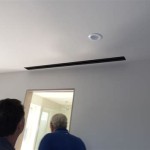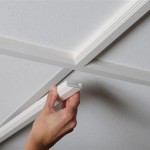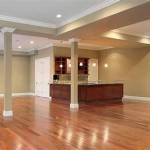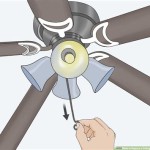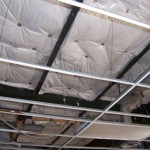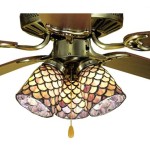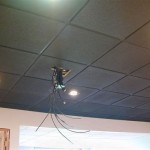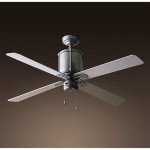Can You Install Shiplap Over Popcorn Ceiling? A Comprehensive Guide
The question of whether shiplap can be installed directly over a popcorn ceiling is a common one for homeowners looking to update their interiors. Popcorn ceilings, a textured ceiling finish popular from the 1950s to the 1980s, are often viewed as outdated and undesirable. Shiplap, with its clean lines and rustic charm, offers an appealing alternative. However, before embarking on such a project, several factors must be carefully considered. This article will explore the feasibility of installing shiplap over a popcorn ceiling, outlining the potential benefits, drawbacks, and necessary steps to ensure a successful outcome.
Popcorn ceilings were widely used due to their sound-dampening properties and ability to conceal imperfections in the ceiling surface. The texture, often made with asbestos in older homes (pre-1980s), was sprayed onto the ceiling, creating a distinctive, bumpy finish. Shiplap, on the other hand, consists of wooden planks, typically with a rabbeted edge, allowing them to overlap and create a visually appealing, continuous surface.
The decision to install shiplap over a popcorn ceiling often stems from a desire to avoid the messy and potentially hazardous process of removing the popcorn texture. Removing popcorn ceilings can be labor-intensive, requiring scraping, sanding, and potentially dealing with asbestos abatement. Installing shiplap directly provides a quicker, seemingly less complicated alternative.
Key Point 1: Assessing the Condition of the Popcorn Ceiling
Before proceeding with any shiplap installation, a thorough assessment of the existing popcorn ceiling is crucial. The condition of the popcorn texture will significantly impact the success and longevity of the shiplap installation.
First, inspect the popcorn ceiling for any signs of water damage. Water stains, discoloration, or peeling texture can indicate leaks from the roof or plumbing above. Addressing any underlying water issues is paramount before covering the ceiling with shiplap. Trapped moisture can lead to mold growth, potentially damaging both the shiplap and the underlying structure.
Next, evaluate the adhesion of the popcorn texture. Gently test various areas of the ceiling to see if the texture is firmly bonded to the drywall or plaster. If the texture is loose or flaking, it may not provide a secure base for the shiplap. Loose texture can cause the shiplap to become unstable over time, potentially leading to sagging or even detachment.
Furthermore, consider the overall flatness of the popcorn ceiling. While the texture itself is uneven, the underlying surface should be relatively flat. Excessive dips or humps can create challenges during shiplap installation, resulting in an uneven final surface. If significant irregularities are present, some leveling work may be necessary before installing the shiplap.
Finally, particularly in older homes, asbestos testing is essential. Popcorn ceilings installed before the 1980s often contain asbestos fibers, which are hazardous when disturbed. If asbestos is present, professional abatement is strongly recommended. Covering an asbestos-containing popcorn ceiling with shiplap can be a less disruptive alternative to removal, but it's crucial to understand the risks and ensure the ceiling remains undisturbed to prevent fiber release.
Failing to properly assess the popcorn ceiling's condition can lead to costly repairs and potential safety hazards down the line.
Key Point 2: Installation Methods and Considerations
Assuming the popcorn ceiling is in reasonably good condition, several installation methods can be employed to attach the shiplap. The chosen method will depend on the specific circumstances and the desired aesthetic.
One common method involves furring strips. These are thin strips of wood, typically 1x3 or 1x4 lumber, that are attached to the ceiling joists through the popcorn texture. The furring strips create a level and secure surface to which the shiplap can be nailed or screwed. This method is particularly useful for ceilings that are not perfectly flat or for running electrical wiring behind the shiplap.
When installing furring strips, locating the ceiling joists is essential. A stud finder can help identify the joist locations, ensuring the strips are securely fastened. Screws are generally preferred over nails for attaching the furring strips, as they provide a stronger and more reliable connection. The furring strips should be spaced no more than 24 inches apart, and ideally closer for added support.
Another method involves directly attaching the shiplap to the ceiling joists through the popcorn texture. This method requires careful planning and precise execution. The shiplap boards must be long enough to span multiple joists, and screws or nails should be driven directly into the joists for maximum holding power. This method is generally suitable for ceilings that are relatively flat and where the popcorn texture is firmly adhered.
Regardless of the chosen method, it's crucial to use appropriate fasteners. Screws or nails should be long enough to penetrate the popcorn texture and the underlying drywall or plaster, reaching securely into the ceiling joists. Using fasteners that are too short can result in a weak connection, leading to the shiplap detaching over time.
In addition, consider the weight of the shiplap. Heavy shiplap planks may require additional support to prevent sagging. Thicker furring strips or closer joist spacing can provide the necessary reinforcement.
Finally, careful attention should be paid to the alignment and spacing of the shiplap boards. Maintaining consistent gaps between the boards is essential for achieving the desired aesthetic. Using spacers can help ensure uniform spacing throughout the installation.
Key Point 3: Potential Drawbacks and Alternatives
While installing shiplap over a popcorn ceiling offers a potentially easier solution than removal, it's important to acknowledge the potential drawbacks and consider alternative approaches.
One significant drawback is the potential for reduced ceiling height. Installing shiplap and furring strips can lower the ceiling by several inches, which may be noticeable in rooms with already low ceilings. This can make the room feel smaller and less airy.
Another concern is the added weight on the ceiling structure. Shiplap, especially when combined with furring strips, can add a significant amount of weight to the ceiling. It's important to ensure the ceiling structure can support the additional load. Consulting with a structural engineer may be advisable, particularly in older homes.
Furthermore, covering a popcorn ceiling with shiplap does not address any underlying issues with the texture itself. If the popcorn texture contains asbestos, it remains present and could potentially be disturbed during future renovations. While covering the texture is a form of encapsulation, it's not a permanent solution.
As an alternative to installing shiplap directly, consider removing the popcorn texture. While this is a more labor-intensive process, it ultimately provides a cleaner and more permanent solution. Removing the texture allows for a smoother ceiling surface, which can then be finished with paint, texture, or even shiplap. If asbestos is present, professional abatement is essential.
Another alternative is to skim coat the popcorn ceiling with drywall mud. This involves applying thin layers of mud over the texture, gradually smoothing the surface until it is flat and even. Skim coating requires skill and patience, but it can be a cost-effective way to create a smooth, paintable surface.
Ultimately, the best approach will depend on the specific circumstances, including the condition of the popcorn ceiling, the desired aesthetic, and the homeowner's budget and skill level. Carefully weighing the potential benefits and drawbacks of each option is essential for making an informed decision.
The decision to install shiplap over an existing popcorn ceiling is not one to be taken lightly. A comprehensive understanding of the potential issues and the meticulous execution of proper installation techniques are paramount for a successful and safe outcome. Consideration of alternatives should also be a part of the decision-making process.

Easily Cover Popcorn Ceilings With Shiplap

How To Cover A Popcorn Ceiling With Shiplap Sprucing Up Mamahood

How To Plank A Popcorn Ceiling

Easily Cover Popcorn Ceilings With Shiplap

Easily Cover Popcorn Ceilings With Shiplap

Easy Transformation How To Cover Popcorn Ceilings With Shiplap Hometalk

How To Install Shiplap Ceiling Over Popcorn Making Maanita Covering Remodel

How To Plank A Popcorn Ceiling

Easy Transformation How To Cover Popcorn Ceilings With Shiplap Hometalk

Diy Shiplap Ceiling Angela Marie Made
Related Posts

